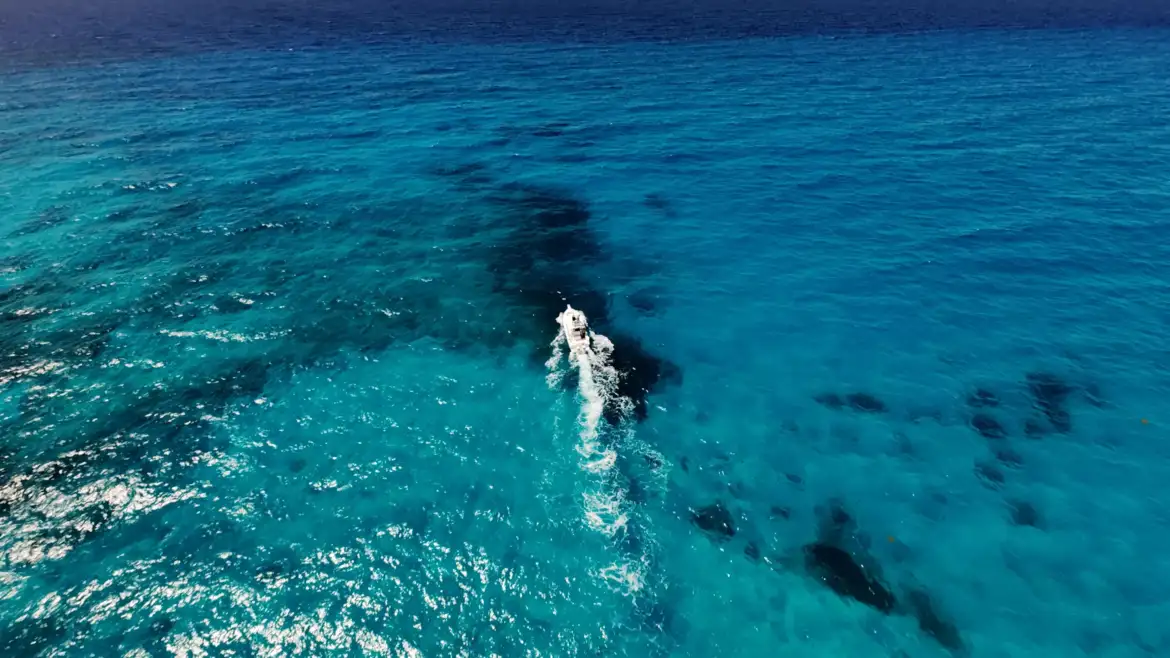By Captain John Sahagian
August • September • October 2006 – Fishing the Florida Keys
When people think of what fishing in the fall, they often forget about the great opportunity the backcountry has to offer.
Fishing the flats in the fall has many upsides.
First, the traffic in the backcountry is greatly reduced. Once the lobster divers have had their fill after the opening weeks of the season, there is very little traffic around our northern Keys to push the fish off the flats. It’s rare to approach a flat only to find another angler has beaten you to it.
Except for the possibilities of tropical weather patterns, the wind tends to be fewer than 10 knots for most of the fall. The downside is that the water tends to warm to the upper tolerance levels for bonefish.
With that in mind, you need to get an early start to find them on the skinnier flats. Bonefish can, however, be found on the deeper flats and near channel edges as the water is rising.
The smaller tarpon usually found in the fall will be receptive to any of the baits, provided it is well presented.
For the variety of sharks found in the fall, crustaceans are preferred by the bonnethead and fish are preferred by the lemon and blacktip sharks. And the good news is that the permit are very tolerant of higher water temperatures.
Most of the species of fish that are targeted in the busy spring are still available in the fall, with the exception of the larger migrating tarpon. If tarpon are on your list, you can often find smaller specimens around mangrove undercuts throughout the year.
Finally, for barracuda, fish are the preferred bait. However, juvenile ‘cudas are not above attacking a shrimp meant for other prey.
To make up for the lack of large tarpon, there are plenty of large sharks on the flats this time of year.
Tackle This
The tackle used by most flats anglers is a light spinning reel paired with a matching 7-foot rod. The preferred line for bonefish and bonnetheads is 8- to 12-pound test, while 12- to 20-pound test is more suitable for permit, tarpon, ‘cudas and others. Many anglers are starting to use spectra fiber braid line such as Power-Pro.
The primary benefit is better casting because of the smaller diameter for a given pound test line. Other benefits include resistance to knots due to twisted line and higher sensitivity due to almost non-existent line stretch. Leaders usually consist of 20- to 30-pound fluorocarbon and are attached with an Albright knot for monofilament or a uni-to-uni knot connection for spectra fiber lines.
For toothy critters, single-strand wire of around 40-pound test will cover most situations. An Albright will work well with mono, however, a swivel is helpful in connecting spectra fiber line to a steel leader.
Bait and Rigging
The three basic live baits for the backcountry are shrimp, crab, and pinfish. There is a lot of overlap as to what fish will eat which baits, but here is a quick line:
- Bonefish are most often targeted with live shrimp. They will, however, take a small crab given the right conditions. On occasion, they have been known to eat pinfish and other small white bait.
- Permit are a little more selective. The primary bait for them is small crab, although they will occasionally be taken on shrimp. If the permit are small, shrimp may be preferable to crab.
With lighter baits, it is helpful to place a light split shot on the line for casting. Bait holder hooks in No. 1 to 1/0 will take most fish on the flats.
It can be difficult to keep several different rods at the ready and, of course, harder to know which to keep in your hand for quick presentation. You can either go by what you have seen last cross your path on the flat or by what you’d most like to target. The spare rods can be laid on the deck or placed in rod holders. Be warned though, that more than one shark has helped himself to a pinfish and the rod it is connected to when left dangling at the side of the boat while an angler was straining to look for elusive fish in another direction.
You should remember to keep your bait dangling in the water for more than just keeping it alive. Most flats fish feed to a great extent by their sense of smell. Dangling bait, even a lowly shrimp, can act as chum and help bring fish to you.
Seeing is Believing
Flats fishing is a visual sport. The art of seeing a well-camouflaged fish in its natural habitat requires an edge. The first and best edge is to get a pair of high-quality polarized sunglasses. They will cut the glare and let you penetrate the surface of the water.
The color of the lenses is the key to how well you will see. On bright days, gray lenses will give you the truest color. On overcast days or in low-light situations, amber lenses will allow for the highest light penetration, but will filter the blues from the spectrum.
Higher is Better
The other advantage can be found in elevation. The higher your elevation, the further you will be able to see into the water. A poling platform is a must, not just as a place from which to pole but also for the visual advantage. For an angler on the bow, a casting platform can bridge the gap between what the poler can see and what the caster can see.
Once you see your fish and have chosen the proper bait, you need to make your cast. You need to place your bait carefully. If you cast too close to the fish, you could spook it; too far and the fish will never see it. A good compromise is 4 to 5 feet in front of a moving fish. If the fish is not moving, bring your cast in to 3 or 4 feet. If you are going to make an error in your cast, make it in the form of too far in front and past your target.
A bait cast inside of the path of travel must be retrieved and re-cast, taking precious time. With sharks especially, you should make sure your bait crosses the shark’s path to give it the scent.
The examples of fish mentioned are just the most common found on the flats. There are many others you can expect to find. Jack crevalle, blue runners, mutton snapper, and mangrove snapper are a few of the other game fish you can expect to find.
Occasionally, there are unexpected catches on the flats. A swordfish was captured on an Upper Keys flat and a king mackerel was caught on a flat in the Lower Keys. By being ready for anything, you can maximize your fall flats trip.
Captain John Sahagian
FunYet Charters – Little Torch Key
(305) 872-3407 | www.FunYetCharters.com


